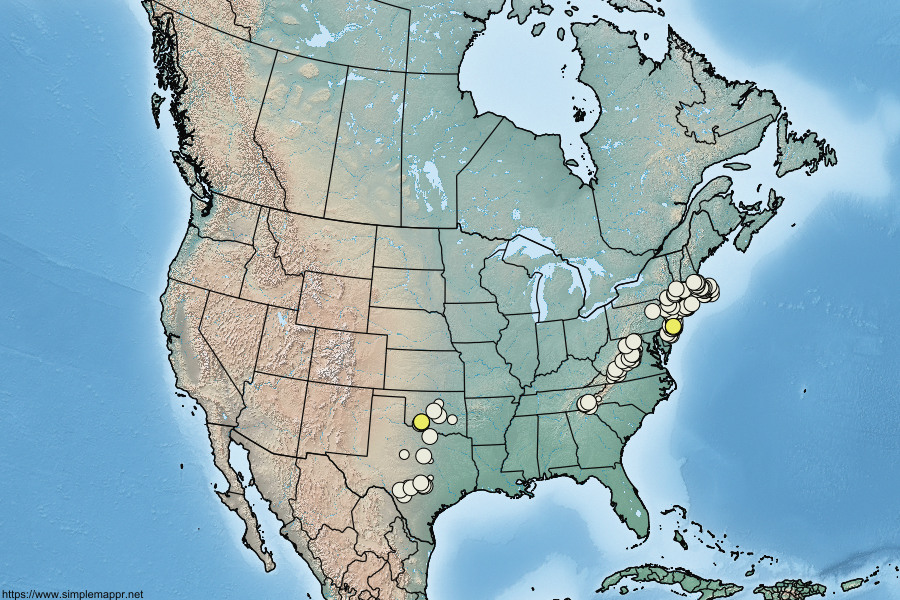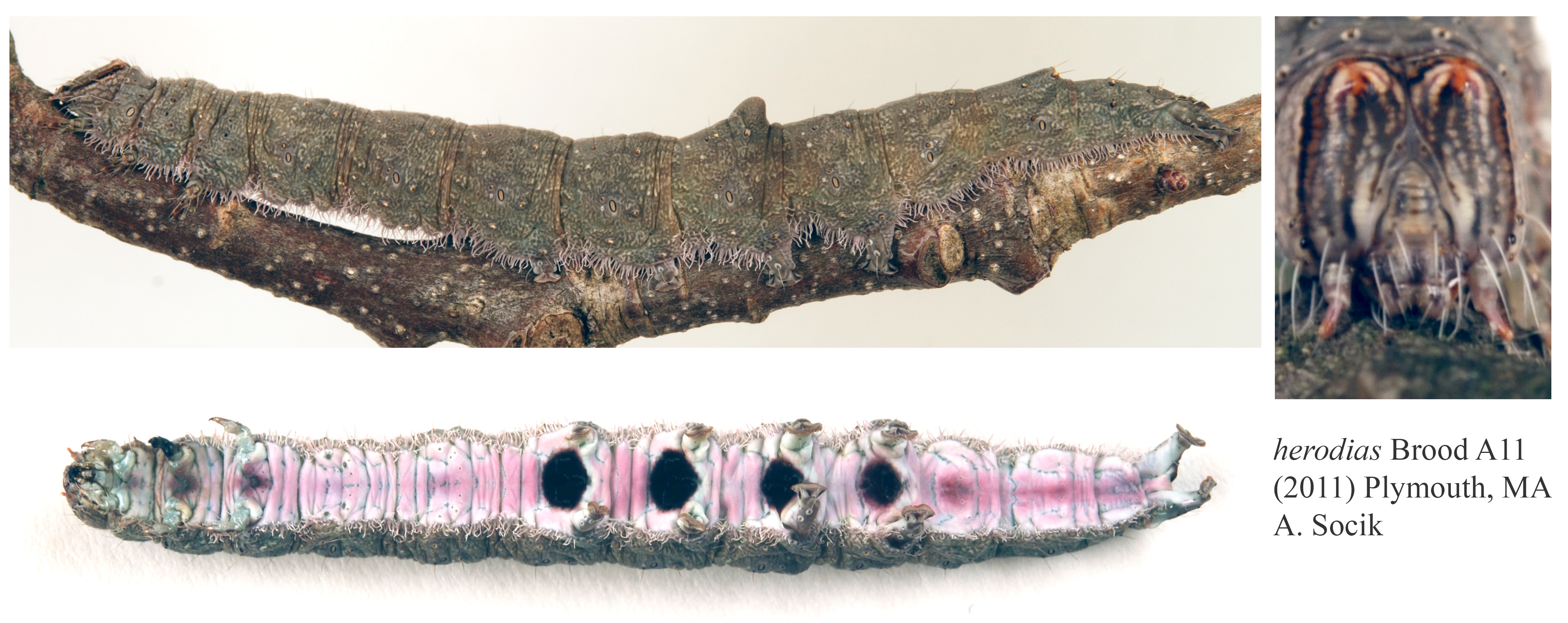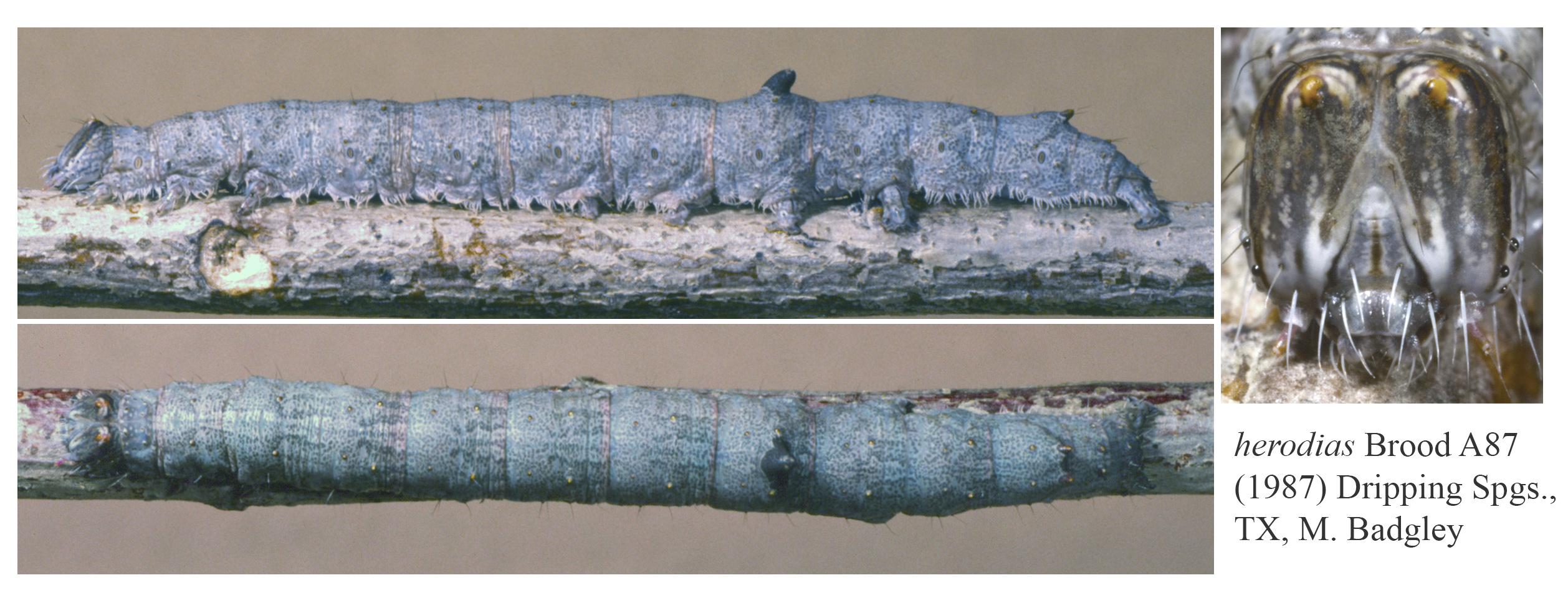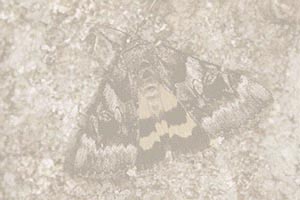 Catocala herodias
Catocala herodias
Strecker, 1876
This Catocala has the most disjunct geographic range among the Nearctic species, occuring only in barrens and on mountain
balds from the Appalachians through
New England, and then again in open oak areas from central Texas into central Oklahoma. The larva of
herodias is distinctive in its relative blandness: largely uniformly gray to grayish brown ground color, subtle lighter speckling, limited A5 saddle patch,
concolorous low conical A5 hump/horn, slight A8 protruding tubercles; venter whitish with mauve/pink shading, crisp dark spots only on A3-A6; head capsule
with dark lateral band extending from ocelli to top, and connecting across the lobes, orangish vertices with darker striations on lobes. Foodplant in the eastern
portion of its range is Quercus ilicifolia -- herodias is the iconic underwing species of pine barrens habitats
coastally from New Jersey through Massachusetts.


|





